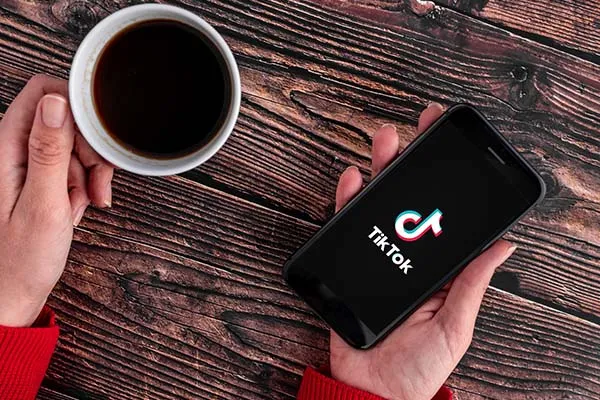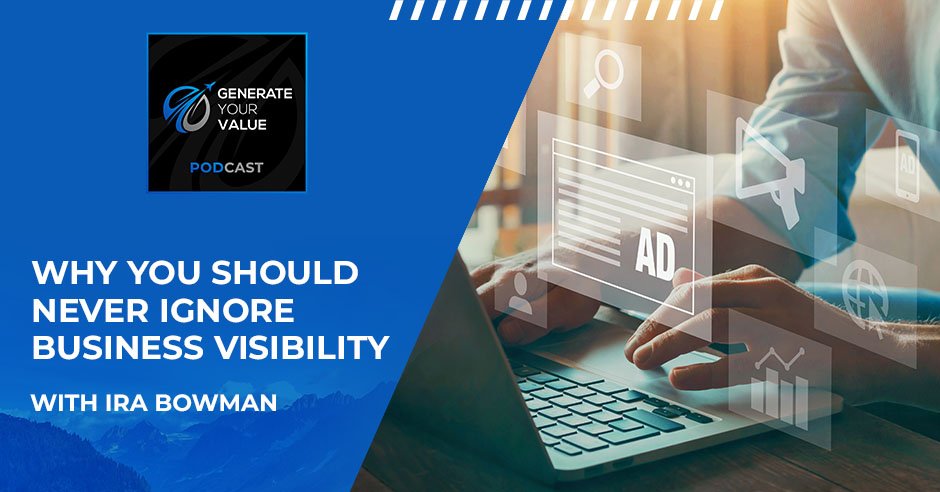Small businesses can create enticing websites and offer incredible products all they want, but if no one can find them, it is useless. Business visibility is everything in today’s digital world, and success will come to you if you know how to play your online cards right. Andy McDowell and Zach Levy sit down with Ira Bowman to discuss how to expand your audience reach through well-designed online marketing strategies. He talks about the best social media platforms to market your content, how to outperform your competitors’ posts, and the best ways to increase website traffic. Ira also explains how entrepreneurs can actively address market risks by building multiple income streams and getting advice from successful people ahead of the race.
LISTEN TO THE PODCAST HERE
Why You Should Never Ignore Business Visibility With Ira Bowman
HOW TO GET MORE PEOPLE TO “SEE” YOUR BUSINESS
Joining me, as always, is Andy McDowell. Andy, good to see you.
Good to see you, Zach. Nice sunny day but we got some rain coming in finally for Atlanta.
It’s started to feel like fall. Nonetheless, we also have an esteemed guest, Ira Bowman. Ira, it’s good to see you.
Thanks for having me, Zach.
Andy, why don’t you tell us a little bit about Ira, and then we will get this show on the road.
I’m excited to introduce our audience to Ira, who has a tremendous story about his life and his career and a lot of golden nugget moments that we hope to draw out through this conversation. Ira is in the media business. He’s a marketing sales expert photographer. He and I have had conversations about photography since I’m a photographer as well. He’s a graphics designer, website builder, philanthropy owner, SEO, content writer, and TEDx speaker.
Ira built a large social media following with a six-figure following count on both LinkedIn and Instagram. He holds a Bachelor of Science degree from Liberty University, where he graduated with a 3.916 GPA and interdisciplinary studies with a concentration in business and religion. That certainly says a lot about Ira and his many interests, and he strives to do everything with excellence. That’s a big part of the reason why he’s on the show.
Over his 25-year career, to date, Ira has worked in the restaurant, eCommerce, and marketing industries. The majority of Ira’s career has been spent in the sales role in the print and graphics industry, helping small and medium-sized businesses gain market share and increase sales, which we are going to get into in this episode since that’s our audience. Since June 2020, even after the launch of his business, Bowman Digital Media, Ira has focused on helping increase visibility for his clients and social media and increase website traffic.
The internet has become the main source of commerce and visibility in an effort for businesses to increase sales. Ira lives outside the LA area. He’s married and has eight children. With that, Ira, I will send my greetings to the show. Thank you so much for coming on to share your story. Why don’t you take our audience through your print career and your decision to be an entrepreneur? What was involved with that?
The decision to be an entrepreneur was more like a reaction than a decision but we will get into it. I was in the Bay Area back in 2000. I was working in the restaurant business and got married to my wife. My wife is a hairdresser and I wanted to get into sales. The place I was working, my day job, was doing customer service at a bookstore that was online. It was called FatBrain.com. They were bought out by Barnes & Noble and will be moving to Reno, Nevada.
I didn’t want to move to Reno, Nevada, especially not for $12 an hour, so I had to find a job. I found a job with one of my wife’s clients, who was looking for a sales rep. I went there. Zach and I talked briefly in the green room about our college experience. I was a Beta Theta Pi at San Jose State, and the guy that owned this print company was a Beta Theta Pi at Purdue.
When I got into the interview, once he found out I was a Beta, he offered me the job. I had no idea what I will be selling but I didn’t care. I was interested in selling because I thought I would be good at it. That’s why I got into print. I was selling the hardware first, then over time, I got a job where they liked me but they didn’t need a hardware sales rep. Their sales team for that was full, so they said, “Do you want to sell the graphics and the output?”
I said, “Sure, I could do that. It sounds like fun.” I transitioned, at that point, in my career over to the graphic side. That’s how I got into graphic design. For many years, I was in the print business. I sold hardware and output. We did everything output-wise. That’s fun, although it’s a little bit more common than it used to be. When I got started, most people didn’t know that you could do floor graphics or wrap anything.
I’ve wrapped about everything you can think of. I used to tell somebody, “If you want something printed, I could cover any surface except for the skin, including things like underwater at the pools.” If you have ever been to some of these places out in the resorts in Vegas where they do have pools. I’ve done stuff like lily pads on top of the water.
I’ve wrapped the bottom of the pools. It has been a fun career but the thing that made me a little bit different was these smaller businesses. If they wanted to cover a trailer, a fence or the side of a building and didn’t have a graphic designer, I could design the graphics for them, and then they could get the print job. I worked with a lot of small and medium-sized businesses, increasing their visibility locally. It was back then. That was my main thing.
I didn’t work on national campaigns. I was working with mom-and-pop business owners from every type of business you could think of to cover windows, doors, trucks, vehicles, buildings, and all kinds of stuff. That’s how I got into it, and then you asked me about how I switched over to entrepreneurship. As I said, it was a reaction to what was happening with COVID. What happened is that I came down to LA and took a job for a company I had worked for before in Vegas.
That’s actually the one that I got started in the color graphics industry away from the printer equipment. Anyways, I specialized in events and hospitality. In 2020 in LA, there was no event and hospitality business. It all shut down. There was nothing. They closed the location I was working at. I was like, “You are out of a job.” I had a non-compete, and we had moved five months before that. My wife and I were like, “We are not moving.”
What do you do when you have a non-compete and don’t move? You do something else. That’s the answer. I run a philanthropy, which I’m sure we will get into in a little bit but that’s called ProjectHelpYouGrow, where I help people find jobs. My website does more than I do. We help connect job seekers to employers for free. Through that, this was pre-COVID data. I learned that the average job search in the United States is six and a half months.

If you got six and a half month average wait and the economy shuts down and clamps down tight, it’s obviously longer than that but who knows how long. I didn’t know at that time because there was no data out yet on that. I knew that I wasn’t going to make it. I had about two months’ worth of cushion in the bank. With my eight kids, my mortgage, and all that stuff, I had basically two months I could survive. I have $12,000 in the bank, so what do you do?
What you do is start a business called bootstrapping. The only reason that worked is because I had the six-figure following that you were talking about on LinkedIn. I didn’t have that on Instagram yet. I was working on it but I had 150,000 followers on LinkedIn. I thought, “I’ve got enough bandwidth here with my sales experience, marketing experience, and Rolodex.” For people that are a little bit more experienced in the audience know what that is. That’s what I did. It was a reaction to my circumstances.
You were like me. I got laid off in June 2019 because of the 737 Max crashes and crisis that followed after that, and I had plans to do what I’m doing now. After 30 years for the company, it got shortened to 22. In reaction to that particular piece, I’m doing what I’m doing now full-time. I’m a kindred spirit with you from that perspective.
It’s a happy accident. It’s not to downplay the 737.
I don’t have one regret about it. It’s the second time I have been forced to leave a job. In both times, I’ve come at it with huge blessings from it.
For me, financially, it has been the best position I’ve ever been in.
I’ve heard a couple of interviews that you’ve done, and one of the things you’ve talked about that I like and want our audience to hear you go through is your feelings about what the difference is between a small business and an entrepreneur.
It’s so simple. In fact, when I launched Bowman Digital Media, I didn’t intend to be an entrepreneur. I was trying to create a job. Here’s the difference. If you are in your business and you are working in your business 40, 50, 60 or 80 hours plus a week to survive, everything goes through you because nobody can do it as well as you.
There’s a bunch of people if they are being honest, nodding their heads. We are all head bobbins. That is if you are a small business owner, not an entrepreneur. No offense because that’s exactly what I was too but here’s what I learned. It’s simple math when you think about it. Nobody is as good as you are at what you do, and you own your business, and nobody will ever care as much about it as you, as the business owner. That should be obvious.
If you work more than 80 hours a week in your business because nobody can do it better, you are a small business owner, not an entrepreneur.
Again, I graduated with a 3.916. I’m magna cum laude from Liberty University. That didn’t teach me this because I didn’t take any Math classes there. I should give credit to San Jose State. San Jose State Spartans teach you that if you have 100, that’s good, especially at 100% but if you take a 60, 70, and 80 and add them together, what is that? It’s a little bit more than 100, is what it is. You can take a couple of 60s, a couple of 70s, a 75, and a 55. You could put a couple of people together and get more than 100% that way. You do this thing called open-up your time slot, so your ROI then on other things becomes better.
What I learned was to allow other people to do the things that are relatively easier to do, more task-based type stuff, and it freed me up to get involved in other things. Now I could work on my business, not in my business. What do I mean by that? Here’s an example. I’m developing a new product for Bowman Digital Media called Mind Movies. Mind Movies have got two beta tests that I’m doing now.
Andrew, you probably know both of the people that I’m doing this for. I’m doing one for Mitch Russo and one for Carol Carpenter. Now, if the product is a success, then I will train a few people on my team in my creative department to start making them, and we will add them to our menu. If I were a small business owner and working in my business 40, 50, 60, 70 or 80 plus hours a week, I wouldn’t have time to develop these new products. Also, quality of life.
I have these eight kids. I’m trying to date my wife and make sure my kids know I love them. As men, at least in my generation, we were taught that our main job is to provide and protect for our families. Our family is supposed to know that that means we love them but this generation doesn’t know that. They don’t recognize that. They spelled love equals time.
If you are a small business owner and not spending any time with your family, one of the things that can help you is the idea of becoming an entrepreneur. You can learn to work on your business and allow other people to work in your business. Technically, an entrepreneur has more than one revenue stream. That’s what the classic definition is, for example, with me. I have passive income streams that I’ve got coming in now. I’ve got investments that I’ve worked on. Zach and I could talk about that.
I run the nonprofit for ProjectHelpYouGrow, and I’m trying to acquire a business in Las Vegas. There’s a business out there in Las Vegas that’s for sale, and I’m trying to buy it. A small business owner usually is going to have that one thing, and they are all in it. That’s their morning, noon, and night. They are all consumed by it. Frankly, it’s a ball and chain. It’s their badge of honor but it’s also the thing that holds them back from doing everything they want to do. No offense to any of you small business owners.
You are preaching to the choir. Zach has heard me say that phrase over and over again. I’m banging into the head of my clients about it. My whole workshop series is based on that premise. We need you to work on your business and not on your business.
It’s nuanced, guys. If you are not understanding what we are talking about, it’s simple. Can you go away for three weeks and have your business run without any hiccups? Anybody can go away for three days or a week. You can plan stuff out to happen when you come back but when you start going away for 2 or 3 weeks, then what happens?
Who’s the one that’s solving those problems while you are away? Are you working remotely? That’s the test. Can you get off the grid for three weeks? If the answer to that question is no, then you are working in your business and not in your business. You need to adapt. How do you do that? You bring some people in, you train them, you delegate, and let them do that stuff.

Ira, a lot of conversations I have are about managing risk as you can imagine. To talk about that, how did you manage the risk? What would be fear when starting your own business, especially the mind-blowing of having eight kids?
If you are an athlete, you will get this. Sometimes, you have to perform. If you make the decision to jump off the ledge, for me, there was no safety net. I was literally walking across the wire, across the Hoover Dam or whatever analogy you all want to think about here. We talked about my wrestling background in the green room. For those of you who don’t understand, when a pin or die is not a slogan. It’s a way of life. We trained all the time for high-pressure situations, and we knew that the other guy that you are going to be wrestling against was trained and conditioned hard in the same way. Most of the time, the winner was the one that was more mentally strong.
Look what happens in wrestling. If you want to look at it, we are wrestling against somebody who’s exactly the same weight as we are, which is their muscle mass, their body fat, for the most part, unless you are a heavyweight, which I was not. You are almost the same. If you are an inch taller, that means they are a little bit stronger.
If you are an inch shorter, then you are a little bit stronger but realistically, you are about the same. How do you win or lose? A lot of times, it comes down to determination and mental preparation. I got to tell you, that’s where I excel. It’s not for, in my opinion, and estimation, the faint of heart. What did I do? Here are a couple of good things that I did, and I called these informational interviews.
I talked to people who had been there before me, a lot of them. I put my ego to the side and said, “I don’t have room to be an egomaniac here.” There’s one thing about being confident. It’s another thing about being cocky. I tried to be confident by assimilating knowledge. Learn what I could but not have that paralysis by analysis. I didn’t have time to wait to be “an expert.” I did add to learn as I go. What gave me the confidence?
One of the hardest parts about making money is visibility. I already had that built-in because I had been working on my visibility for a long time. I understood the need to be seen. A lot of small business owners fail, not because their product isn’t good, they don’t have a good value, their morals, or any of those things. It’s frankly because nobody knows they exist, and then they fall into the cheap trap of lead generation, which we could talk about forever because it drives me insane.
Many small business owners fail not because their product doesn’t have a good value. Most of the time, it is because nobody knows they exist, and they fall into the cheap trap of lead generation.
Lead gen is the reason why most of you guys are dying on the vine. Quit trying to sell to strangers. You have to sell to people who know, like, and trust you, and you don’t sell to them. You show them a value prop. Anyways, I knew all that so that helped me give me confidence. The other thing that’s cool about me is a little bit different but I’m sure we will get into it later.
If you spend five minutes with me and you get to know me at all, you will understand this about me. I am always trying to help other people. That’s a well-received personality trait. When people know that I was struggling, they are like, “I’m going to try and find this guy some clients,” or send me their business directly, which I appreciate either way.
How much does your life’s why play into the industry that you are in and your decision to become an entrepreneur, and so forth? It’s because kindness comes into a why. How does all that get wrapped up for you?
My why in life is my providing for my wife and kids. What motivates me is trying to help other people. I have this saying, which is my mantra, “Life is too short to be selfish.” I was raised by probably the most selfish person on the planet. My dad is the exact polar opposite of me when it comes to this. He’s all about himself. You can learn in life with positive examples or negative examples. What I’ve always tried to do is to help other people out as much as possible along the journey as I’m pursuing my own goals.
That certainly plays into what I do with entrepreneurship and where I volunteer. I’m a graphic designer and a photographer. I work on websites. I do SEO for a living. I do a lot of things that can help a lot of people, so I get asked to do a lot of pro bono work. What projects do I get involved in, and the things that I take on? Typically, I’m looking at what they are trying to accomplish and who they are trying to serve. If it’s a veteran-related thing, you almost have me before you ask. If it’s a thing about preventing suicide, I’m in 100%. If it’s anything about sexually abused kids and helping to recover or prevent it, I’m all in. Those are the things that set me off or hype me up to try to help.
You hit on this briefly, talking about the risk side of things but dig deeper on the type of mindset that you feel an entrepreneur has to have to be successful.
An entrepreneur should be a good risk evaluator. ROI is something that I come back to a lot. It’s how I determine how I’m going to use my time and where I’m going to put my funds. Opportunity cost is another thing. A lot of people get caught up in this as a bootstrapper. I will put it down in some real world here. Sometimes, you got to spend money to make money, guys.
Sometimes you got to not focus on, “It’s going to cost me $200.” You got to have at least $200 in the bank but let’s say, funds are tight. You got to think about an idea of the minimum dollar value per hour. I’m not going to work on a task that I’m going to make $20 usually unless there’s some bigger pot of gold at the end of the rainbow.
For example, I volunteered to be an event photographer in San Diego and didn’t make any money. In fact, I had to pay to get down there because I’m an hour and a half North and East of San Diego, outside of LA, in this little town called Moreno Valley. 200,000 people are little out here in LA. I drive down and do the event and drive back. I didn’t get paid. They didn’t have my sign-up.
They announced my name but not my company while I was there like, “Thanks, Ira, for helping shoot photos.” I’m like, “That’s awesome.” Why did I do it? Here is the idea. The opportunity cost for me to go, they had 4, not 1,2 or 3 but 4 national newscasters personalities in this event they were speaking. I took all their photos. Now, I’m tagging them on Instagram and messaging them on Instagram saying, “If you would like the rest of your photos for free, send me your email.”
Guess what I did? I made friends with four people who can help me in spades with visibility and publicity and make connections. Two of them have already asked me if I do a gig for them that will be paid for. This is what’s interesting about entrepreneurs in this risk tolerance that we are talking about. Not everything is about the invoice today or tomorrow. In some things, you have to play chess, not checkers. You have to go, “Where can I put myself in position?” Especially now, where people are still, maybe not in Georgia but in California, being a little bit gun shy about going out in public and who they are meeting with.
I’m not one of those people, by the way, but I’m out there meeting as many people as I can. Where can you go and meet people strategically that can help set you up? It’s things like that. Sometimes, you are going to pay people to do things that you could do better than them. As I said, we are going to get back down to that. I could do it at 100%, and somebody else could do it at 60%. The question isn’t, “How good can they do it?” The better question should be, “Can they satisfy the job and the expectations of the client?” If you are doing it at industry-acceptable levels at 60% and now you can free up 100% of your time, you give the work to the 60% person. They do the job satisfactorily.

Everybody is happy, the invoice gets paid, and no complaints. That’s good but you freed up your day. What are you going to do with your day that you couldn’t have done because you were busy doing the task that you paid the 60% person to do? Once you get on this, you got to be careful if this is not your comfort zone because it’s an avalanche. What happens is you start going down this diatribe of, “I could actually go to the beach and listen to the waves crash on the shore and relax and de-stress.” The entrepreneur mindset at first is scary because you don’t have a safety net. I will tell you this. I worked for many years in the print industry and was good at my job.
I’m not trying to brag. I was never fired. If you want to know something about Ira Bowman, I worked for 4 of the companies that I worked for in my 20-year career in the print business 2 times each. They all hired me back, which is rare if you are a small and medium size business owner. Usually, when people leave, they burn the bridge or left for a reason, and you don’t ask them back. I was bought back several times. You could ask me why I left in the first place. It’s because we were having a kid, and I wanted more money to pay for a kid. Every time I left, I lost 100% of my income.
I replaced it with another thing. When I got laid off, the veneer of job safety vanished. That’s what it is. It’s a veneer. You think you are safe but you are not safe. Those benefits can be taken away at any time. They could change the price of the benefits each and every year, and they do. You could get a demotion. Those things didn’t happen to me but they could. What I said when I was setting up Bowman Digital Media was that I don’t want any one client to be more than 25% of my income, and I’ve maintained that for two and a half years. If I was to lose an account, and I have lost some accounts. I don’t have all the same customers for two and a half years.
I’m not saying anyone fired me but I’m proud of this fact as a side note. For two and a half years, we have had zero negative reviews online that I’m aware of. Not anywhere, not on Google or Clutch, nowhere. We have nothing but positive reviews, 5-star reviews, 4-star reviews, and stuff like that. I take that seriously but the fact is, I knew insulation was what I was talking about here. If I were to lose an account, I would never be back to zero ever again.
Getting laid off was as bad as unpleasant as taking a cold shower. Probably worse. All it is to say that entrepreneurship, at first, when you are jumping off from the employee mindset, and you have everything is “guaranteed” to jump off the ledge to where nothing is guaranteed. You’ve got to earn everything feels like it’s the riskier play. You are more risk-averse.
When you get into entrepreneurship and set it up the way I did, at least, it’s less risky because now I’ve got revenue streams from multiple sources and it would take an awful lot for me to lose everything. The stars, fate, God, however, you want to say it, everything would have to align like the perfect storm for me to lose all my income because of the way I’ve set everything up.
There’s a quote out there, “I would rather make 1% off of 100 than 100% off of 1.”
That’s part of the reason. Everybody has heard you don’t put all your eggs in one basket but that’s exactly what 99% of Americans are doing. It’s by having one job. If you have one job, your income is in one basket. You may not like it, and you might want to defend or fight me now if you are reading this, and I’m sorry about that. It’s the truth. What happens if you get laid off? I could tell you because it happened to me. All the money was gone. The mortgage was still due. I got three kids in college. One was getting ready to start college like, “Dad, I need this, and I need that for applications.” I have a kid who’s thankfully recovered but over the last year, was fighting for her life.
Don’t put all your eggs in one basket. Unfortunately, that’s exactly what 99% of Americans do by having one job.
Throughout all of this, I have spent so much money. If I was making $60,000, $80,000, or $100,000 a year, I made all of those salaries over my career. The most I ever made was $120,000 a year. That was my highest salary. I would not have been able to cover the expenses in 2021 paying for my daughter, even with the $120,000 a year salary. What would I have to do? Borrow against my house, credit cards up maxed, and all those things.
I didn’t have to do any of that because I make more money than that now. Entrepreneurs, it doesn’t take a lot of brains to make a lot of money. You have to quit thinking about the ball and chain way. Look how people who make money. Talk to them. That’s what I did. Remember, I called it an Informational Interview. What is that? You talk to people who are doing the things that you want to do that you haven’t done yet, and you ask them for advice, “If you were starting in my shoes, what are some of the things that you would do? What are some of the pitfalls that you would try to avoid? How can you help me avoid the landmines?” You can ask it.
It’s a mindset challenge.
A lot of us think that the way we do it is the only way to do it like, “Obviously, this is what I have to do.” Get somebody who challenges that. Don’t be irritated by them challenging it. Get them to poke holes in it because that’s your opportunity. The things that you think you are stuck doing that’s your opportunity for growth if you look at them from a whole fresh perspective.
Talk to somebody from the other side of the aisle, don’t punch them because you go to jail because they don’t think the same way you do or have the same values you do. That’s okay. I’m not saying you got to switch sides. Please, don’t misunderstand me. What I’m saying is you have to get out of your own way. The biggest obstacle to success for most of us is ourselves. We must stop thinking like, “This is the only way to think and the only way to do it.” When you say obviously, that’s where your problem is.
The biggest obstacle to success for most people is ourselves. We just need to stop thinking that the only way we think is to do something.
Let’s get into your business a bit. It’s partially said in your bio but talk a little bit about your current business. As I said before, I’ve heard you do interviews. Flow that into the LinkedIn challenge, the improper mindset about connections follows, and how that leads to the visibility piece. That’s a great golden nugget for people to understand. You did, at least in an interview, I heard, a great job of helping people to understand the difference and where you be paying attention.
If you want to understand how to use LinkedIn, which I know all of you are saying, “I already know how to use LinkedIn. Thanks.” No, you don’t. I would be willing to bet that not one single person that’s reading this now understands how to use LinkedIn, and I will talk to anybody about it personally if they want. Watch my TEDx Talk. I will teach you about LinkedIn in 17 minutes and 49 seconds, and it will change your life. It literally changed my life. How did I get to where I am? I learned how to use LinkedIn.
Remember what I said when I was laid off from my job? The reason I was able to launch Bowman Digital Media is that I had 150,000 followers. I only had 30,000 connections on LinkedIn because that’s the maximum. I laugh when some people tell me, “I have 100,000 or whatever thousand connections.” I go, “No, you don’t.” Bill Gates has the largest following on LinkedIn.
He has 32 million followers but he only has 30,000 connections. It’s the cap. You can’t have any more than that. What my business does is we increase visibility for people their business where people actually are. There are two places in the world where people are by the billions. For the sarcastic people out there, know I’m not talking about China and India. Good guess, though.
The thing with China and India is that they do have populations of over a billion people but they are not all in the same spot. They are pretty well spread out. I can take you to a place now where there are 50,000 people every second hitting the enter button. That’s Google. For those of you who don’t like TikTok, Google is not the number one website traffic-wise in the world. TikTok is, and it has been for the last few years.

Before you dismiss out of hand the silly dances and things that happen on TikTok, understand that’s a gold mine waiting to be tapped. Now you understand a little bit about why I do what I do. I create a company that does six things. Our goal is simple. It is to increase your visibility as a business and to get people to know, like, and trust you as a business.
If you remember what I said earlier, they don’t want lead gen because what does lead gen mean? It means I’m going to email, send a text message or, God forbid, have somebody call you on the phone. Who does that? They are going to try and sell you something in an email or a message before you know, like, and trust them. What’s the response? Most people hang up, “Stop spamming me. I’m not interested.”
What happens is that you get these repetitive because you are on a list. You are part of a campaign, and it drives you insane. You are like, “Why can’t you leave me alone?” That’s not the way to build your business. Even if you are selling a commodity, I would argue that’s not the way to do your business but most small business owners are some type of service based. Let me help you figure this out. Where people are, they are on social media and Google Search Engines.
What my business does is run marketing and social media management for our clients. We create the posts, put out the posts, and comment on the post for the people. Let’s say you are an architect, engineer, accountant, chef, photographer or whatever it is that you do. You are like, “I hate social media. I don’t want to do it.” I totally get it because I don’t want to build a house. My wife is basically rebuilding our house now. I don’t want to do it. I’m not good at that.
We all have things that we are good at, and we have things that we are not. Again, this comes back to the pay somebody to do it, so you can free up your time. We get paid to run the social media of our clients so that they can go about doing what they are good at and benefit from the billions of people that are online. In 1950, if you wanted to start a business, it would probably be brick and mortar. You would try to find the busiest street in your town or city that you could afford to put a property on or rent space along a freeway, main street or some type of highway. Why? It was because of visibility. That was the reason why. It wasn’t because you wanted to fight traffic or you wanted to commute.
It was because you wanted the 40,000, 50,000 or 100,000 vehicles that were going to drive by that every day to see your sign. If you couldn’t do that, then what you would do? You would rent a billboard space if you could afford it or at least you would put an ad in the newspaper or the yellow pages. These are the things that we used to do but people don’t do that anymore. Why? It’s because people aren’t there driving. It’s not that way anymore. It’s an online freeway now. It’s a super highway. We do search engine optimization, which most people don’t understand, but let me put it to you real simple. You’re not going to get website traffic because you make a pretty website. You could go to GoDaddy, Wix or Weebly and build yourself a $99 site, and nobody is going to come to see it.
It isn’t because you didn’t do a good job building the website. It’s because they still don’t know it exist. It doesn’t show up in Google automatically. Even if it does show up in Google, if you are on page 3,742, no one is going to go there. If you are honest and you search Google, you might hit next once, maybe twice. That’s about it for most people.
If you are stubborn like me, you might hit it six times. I sure as heck and get into page 900, let alone page 3,472. How do you get to the top? You hire somebody like me. Let’s be real. You don’t do it yourself. You don’t know how. Algorithms are very complex and dynamic, which means they change all the time. You have to have somebody who stays up with it and who knows it. This is what I do for a living.
The short answer is that you write good blogs, build keywords, make sure your metadata is straight, and make sure your website speed is up to date. You have a lot of traffic. Those are the ways that you get your domain authority up, and that helps you bump up in Google but you don’t have to worry about that. Hire me or somebody like me. Here’s to put it all together.
We run social media, build websites, and do search engine optimization. I am a graphic designer, which we’ve talked about. I think ad nauseam a little bit here. I do photography and video editing. In other words, we do all the things that you need for your website and your social media, so you don’t have to do any of it. All you have to do is educate me on what you do and your value prop, and we get that pretty quick.
We then do it for you so that you can do what you do best. LinkedIn is one social media platform. You need to understand that marketing is about demographics. Who is your perfect client out there? Are they college-educated, blue-collar, white-collar, single-family homes, divorced, male or female? What age are they? Baby Boomers Gen X, Gen Z or Millennials. Who are they? The more information that I understand about your prospects and who your perfect clients are, I can tell you what social media channels we should swim in.
I made this post and if you didn’t see it, go back. That was the 8th or 9th of October, 2022. A lot of people are on LinkedIn, you small business owners, because you are snobby and you go, “I don’t like Facebook, Instagram or TikTok.” I get so many eye rolls with TikTok. They go, “I like LinkedIn, and I’m on LinkedIn.” I go, “Why are you on LinkedIn?” They go, “It’s because that’s the one I like better.” “Are you a consumer or a producer?” Business owners, whether you like it or not, you are a producer, and you need to stop treating social media like it’s entertainment because it’s not. It’s free advertising.
If you tell me that you are trying to be visible and are only on LinkedIn, let me give you some rough figures here. LinkedIn is the twentieth-largest social media platform in the world. It’s not number 1, 2 or 3, not even the top 10. TikTok has a billion monthly active users. Mouse is what we call it in my world. LinkedIn only has 250 million mouse. TikTok is four times.
Let’s say you are an architect and only do projects in the United States. Your business and your geofence are in the United States, and you are only on LinkedIn. Two hundred fifty million mouse is still a lot of people but only 30% of 250 million people are in the United States. Your reach is a lot smaller than you might think it is.
We won’t talk about Facebook, which is still the king of the jungle. It’s 2.9 billion if you want curious. They are number one. YouTube is number two. YouTube has 2.2 billion mouse monthly active users. Eighty-one percent of Americans have and use YouTube every single month. If you are trying to reach Americans and you are not using YouTube, my question to you is, are you stupid? I mean that as compassionately as I can.
That’s my job to irritate you a little bit to get you to change. I want you to see the air of your waste. Let’s do the math. Eighty-one percent of Americans is how many people? It’s a lot of people. There are 330 million Americans. That’s more than the people that are on LinkedIn. All of them so you could especially reach way more.
Instagram is number three. There are 2 billion mouse on Instagram. If your campaign is LinkedIn only and you are not doing YouTube, Facebook, Twitter or TikTok, my question is simply, “Why are you running your social media because you obviously don’t know what you are doing?” Again, I don’t mean to offend you. If I needed to build a house or design a house, I wouldn’t do it either because I don’t know what I’m doing.
This is the exact reason why I wanted to bring you to the show. It is to be able to lay this out for folks in a nice, straightforward manner to wake people up.
You asked me to transition this over to LinkedIn and connections followers. Let me help you guys out. I’m going to ask you a question, and you can do your own homework. Watch my TEDx Talk. Why does LinkedIn have 1st, 2nd, and 3rd-level connections, and what is their purpose of them? What do they do? You folks who think stranger danger, and I get it.
I was raised to stranger danger too. Don’t talk to strangers. Don’t take candy from strangers. I understand. What is LinkedIn? LinkedIn is the “business.” I’m laughing a little bit when I say this because LinkedIn is not but this is what people think it is. They think it’s the place for business people to go and do social media, “I’m a professional. I’m too good for the two billion monthly users. I only want 30% of the 250 million monthly users. That’s good enough for me.”
Again, I’m being tongue-in-cheek here. Here’s the thing. When you are on LinkedIn, you go, “I’m not going to connect to these dudes from India, Australia, London or the people from Alabama.” That’s the biggest rival. I’m making sure I got this correct. I want to slam Alabama to make the people in Georgia root for me.
It is for Zach, not for me.
I wouldn’t say roll tide on here because I’m a Trojan. I’m a USC guy. You game Cox out there from South Carolina that are tuning in to the show. USC does not mean the University of South Carolina to anybody outside of South Carolina. I don’t even know if people in South Carolina think that. USC is the University of Southern California. I didn’t go there either, so I don’t know. I like the Trojans. Here’s the thing. If you are only connecting to people that you know, which is what LinkedIn tells you to do, I understand why you do it but you are making a huge mistake.
If you are only connecting to people in your local region, you are making a huge mistake. What I have been talking about is visibility. Here’s why my posts outperform most people’s posts. It isn’t because I have 199,000 followers on LinkedIn as of this recording. It’s because I have 30,000 connections and what I did is I dissected the globe by time zones, and I made sure that I had at least 100 people in each time zone.

Here’s why I did that. It’s because while you are sleeping, your post goes to sleep, and it’s done. It goes to bed because the algorithm shuts it down. When I go to sleep, my post is still alive, awake, and doing well. Why is that? It’s because I have people that are awake all around the world. When I’m asleep, they are awake, commenting and engaging on my post. They are keeping it alive. Think of it like a beach ball. If you put the beach ball up in the air, eventually, somebody has to bump that thing or hits the ground and stops bouncing.
That’s like a post. You could do this on any platform, by the way. Not just LinkedIn but LinkedIn works differently than all the others. That’s what that 1st, 2nd, and 3rd level connection is all about. You got to figure that out because when you do, then again, you play the game differently. I started connecting with people strategically from around the globe to be my partners, and I make sure that I go and engage with their posts when I wake up. If you don’t engage with people, eventually, they feel you are using them. It can’t be one side. It has to be fair.
That’s a ton of insight, and I talked to you more offline about that for sure. For time’s sake, at the end of every episode, we do like to ask the one question, what does generating your value mean to you? No right or wrong answer.
It’s simple to me. Life is too short to be selfish. At the end of the day, how much time am I devoting to helping others? I can tell you that every single day. I work on a project of some magnitude. Some are the world will never know about. That’s how I’m okay with that because I don’t talk about my charitable works a lot because I don’t do it for publicity. The goal for me is, and again, this is something that is my internal conversation, how am I infecting and positively impacting others? As soon as I jump off this call, I’m going to be leading a group and helping them understand some philosophies that will help them improve their business. I do that for free.
I do that every Tuesday at 9:00 AM my time, and I volunteer that time. I don’t get anything out of it other than the satisfaction of knowing that I’m helping to change the futures of the people that are in this group. That’s one thing. That’s how I do it. In my opinion, you’ve got to volunteer. You know the character of a person when how they treat people who can’t help them back or they don’t think they can help them back.
That actually would make an argument to everybody can help you back in somewhere or not if they want to. It’s like, “Here’s a person that is not in a position financially or whatever to help me. Am I going to invest in them?” Time because it’s not money, and you could throw money, and then I write it off, whatever. I’m not saying I don’t give money for things I do but to me, I don’t count those things as much as I count. Where does Ira actually spend his time, and how much of my time each day is devoted to serving something other than myself?
Your answer is resonating with Zach and me because it’s right in line with how we like to lead our own lives. The main premise behind the whole generates your value moving. It is about helping and supporting others. How are you generating positive value in the world no matter what aspect of your life you talk about, whether it’s your relationships at home or with businesses or your local community or whatever it may be?
I like to think like this. Think globally, act locally. That’s something. I’m a part of the GGA, which is the Global Goodwill Ambassadors Foundation, and we have chapters in almost every country of the world. We have people that are doing things, and I’m the Vice President of Marketing and Projects, so I get to oversee a lot of this stuff, which is cool. The idea is simple. You got to put feet to the street. You got to actually do some things. If you are reading to all this and going, “I would love to do this but how do you manage your day?” It’s because time is the one limiting factor. Let me help you guys with this. This is a bonus tip for hanging on to the end.
How would people get ahold of you?
If I’m any good at SEO and what I do, put my name in Google and see what happens. I will tell you there’s a famous Ira Bowman. There’s a darker one and a lighter one. I’m the lighter one. The buck teeth are me. You could go to IraBowman.com. That’s my photography site. You can go to Bowman Digital Media. That’s my marketing website. ProjectHelpYouGrow is the philanthropy that I have been referencing. That is where job seekers get information and connect with employers and recruiters. You can reach out to me on LinkedIn.
I actually opened up my messaging, and anybody can send me a direct message on LinkedIn. Those are the ways but the tip I was going to give you guys is about time management. I went to a block scheduling time management system a long time ago, and it never failed me. What you do is prioritize what you got to get done in a day. Figure out how much time it will take you and then set time blocks to do that activity. Do it Monday through Sunday and then stick to the time blocks. That’s where the discipline comes in.
We greatly appreciate you coming on the show, Ira. The audience understands why we wanted you as a guest here with all the golden nuggets, as we call them on the show, shared with us. I can’t thank you enough for coming onto the show. Zach, any last words?
Ira, Thank you. I love having guests on that I take nuggets from as well. With the amount of things we have in common, we’ve got to connect outside of this for sure. To our audience, thank you for spending time with us. If this generated value for you, when you haven’t already, click that subscribe button. Follow us on our journey to generate more value in this world.
If there’s somebody that comes to mind, and you are like, “They need to hear this message.” Hit that share button and send it their way, so we can continue to compound that value that we are able to generate, as Ira said, globally as well as locally. With that being said, we will be right here next time at the same time, and have a great week, and Generate Your Value.
Be sure to check me out on Brainz Magazine. I will be posting an article that hopefully brings value to your life once a month. As Zach said, have a great day and week. Don’t be afraid to go out there and Generate Your Value in this world. Take care.
IMPORTANT LINKS
- Bowman Digital Media
- FatBrain.com
- ProjectHelpYouGrow
- TEDx Talk – From Laid Off to Six Figure Business Owner-A LinkedIn Strategy that Works- Ira Bowman TEDxWilmington
- Global Goodwills Ambassadors Foundation
- Brainz Magazine
- IraBowman.com
- LinkedIn – Ira Bowman
ABOUT IRA BOWMAN

Ira Bowman holds a Bachelor of Science degree from Liberty University where he graduated with a 3.916 GPA in Interdisciplinary Studies, with a concentration in Business and Religion. This says a lot about who Ira is, as he has many interests, and he strives to do things with excellence.
Over his 25-year career to date, Ira has worked in the restaurant, e-commerce, print, and marketing industries. The majority of Ira’s career has been spent in a sales role in the print and graphics industry helping small and medium-size businesses gain market share and increase sales. Since June of 2020, with the launch of Ira’s business, Bowman Digital Media, Ira has focused on helping increase visibility for his clients on social media and increasing website traffic. The internet has become the main source of commerce and visibility is important to increase sales.
Ira Bowman currently lives in Southern California just outside Los Angeles.







